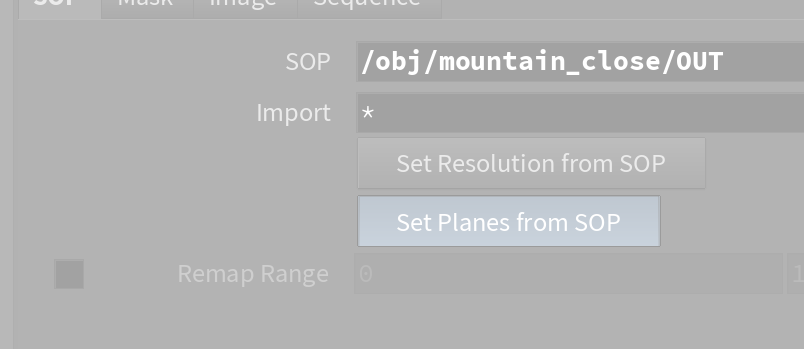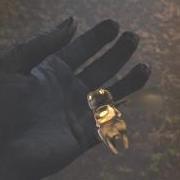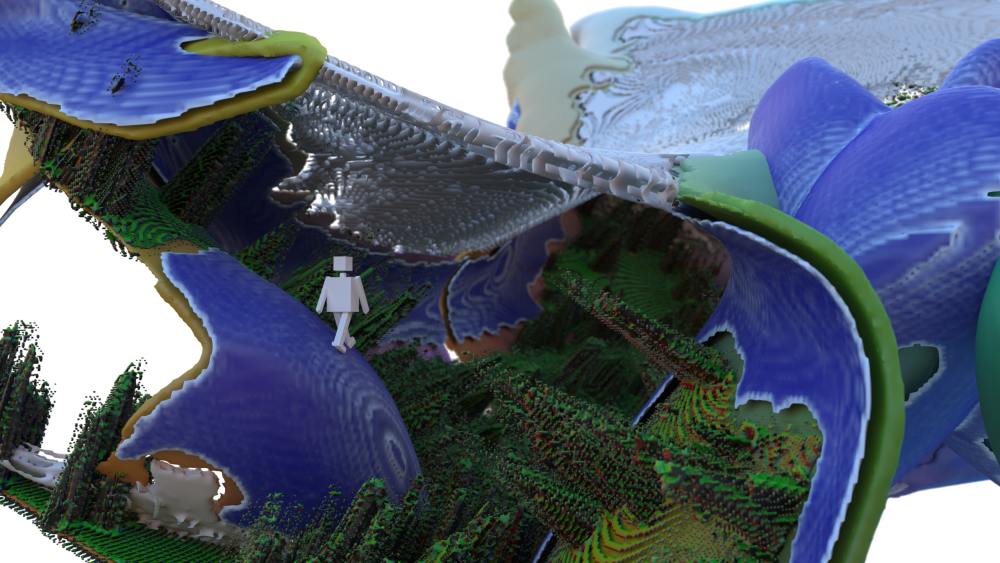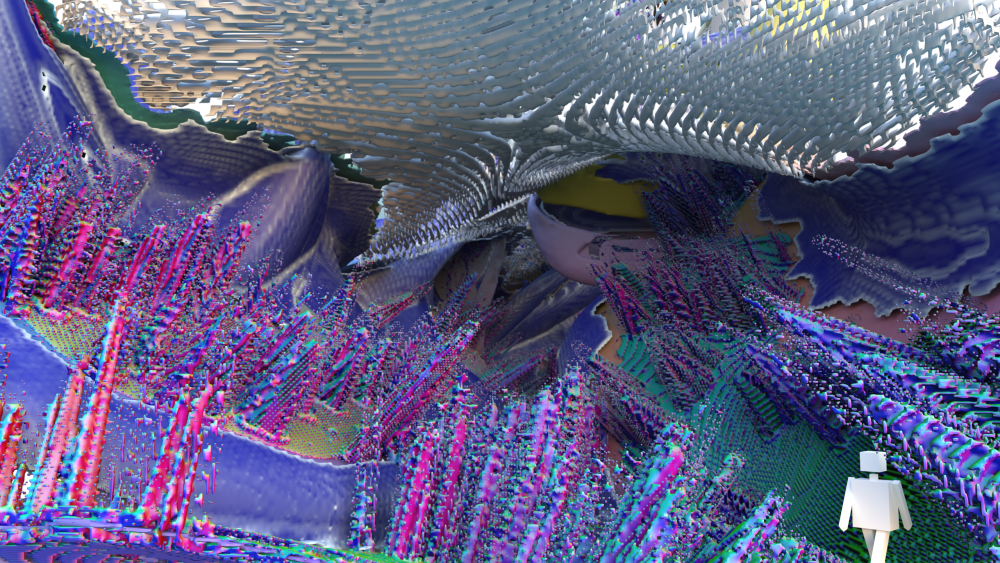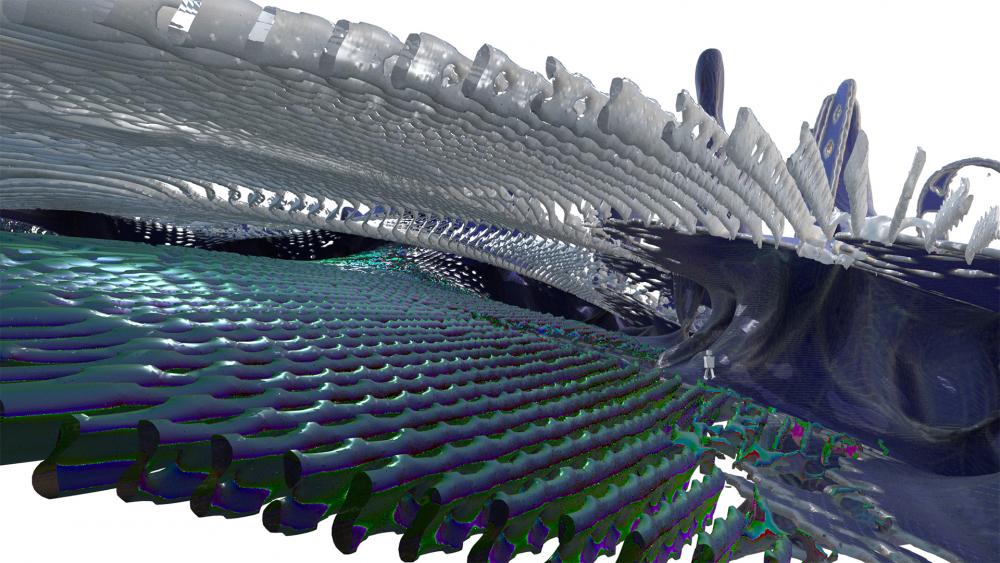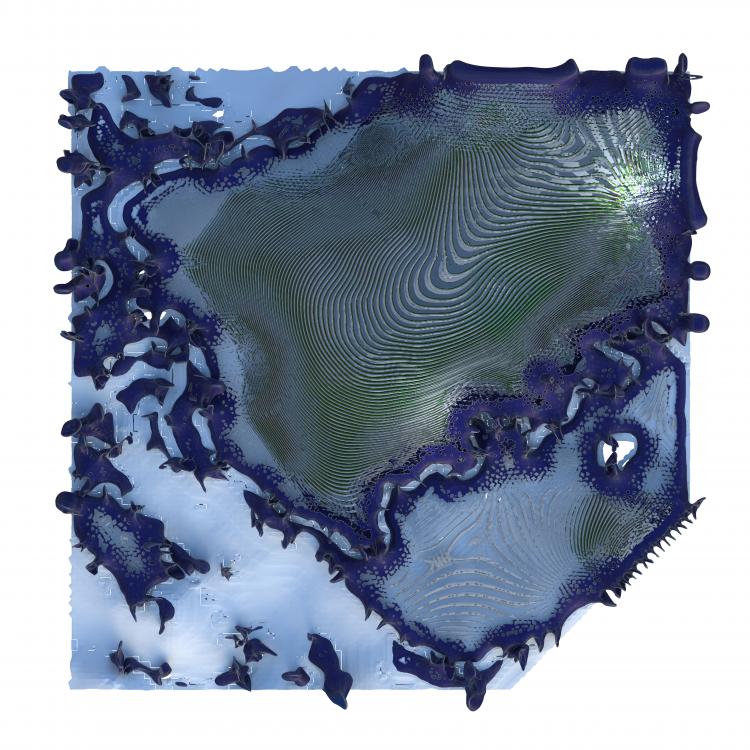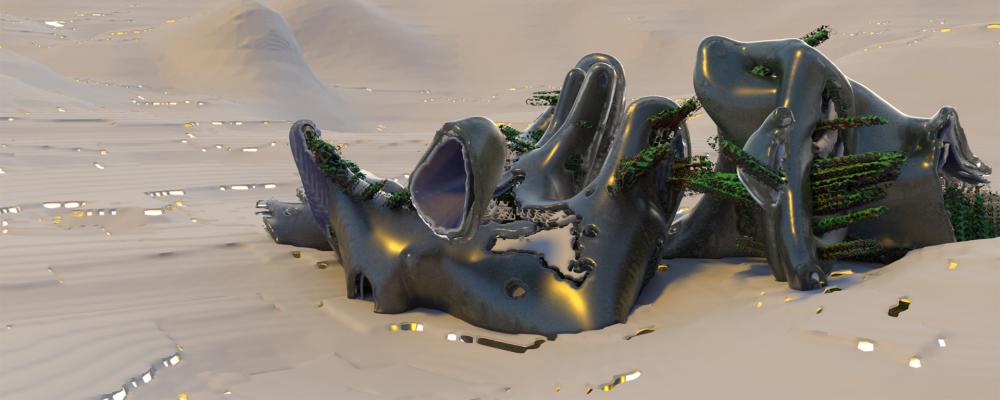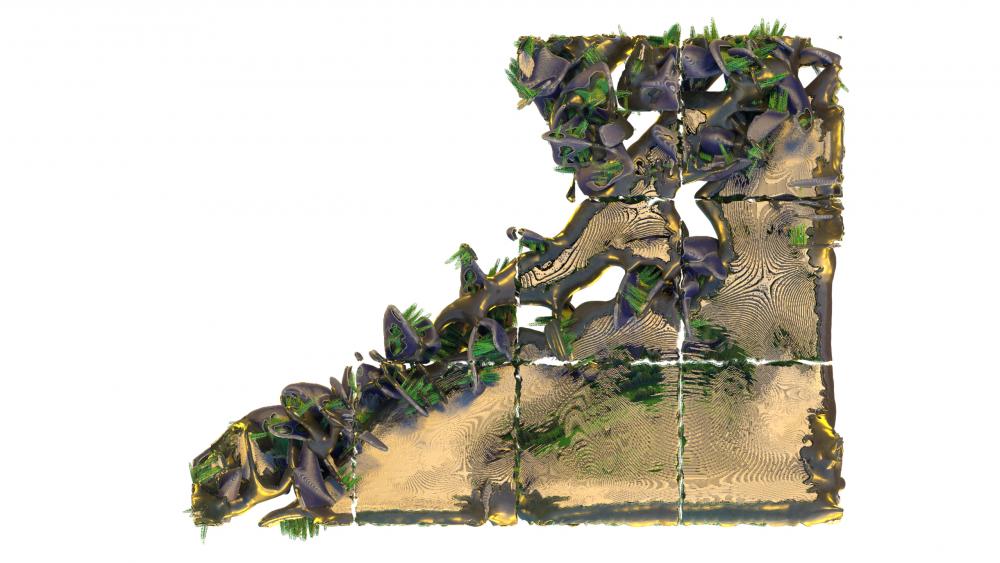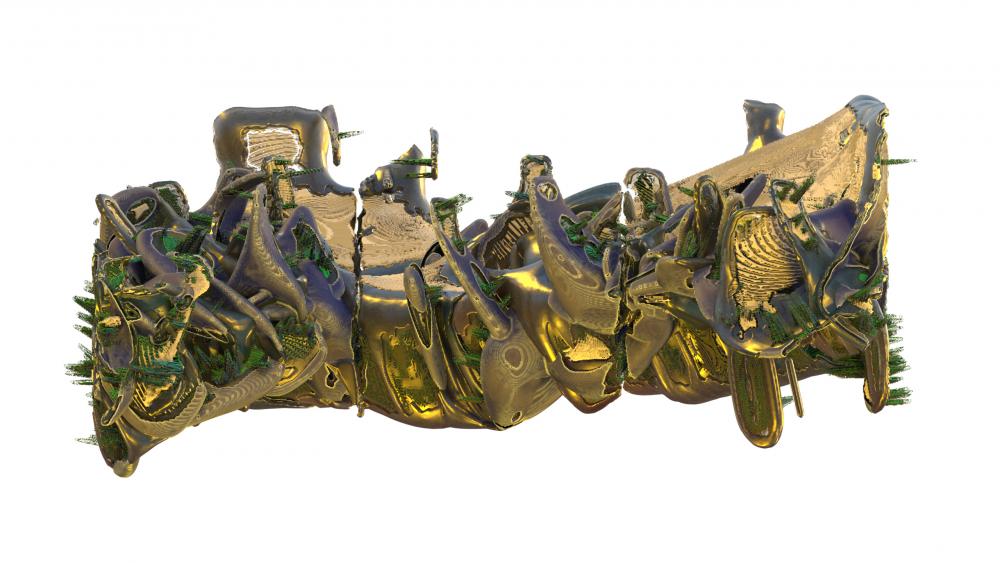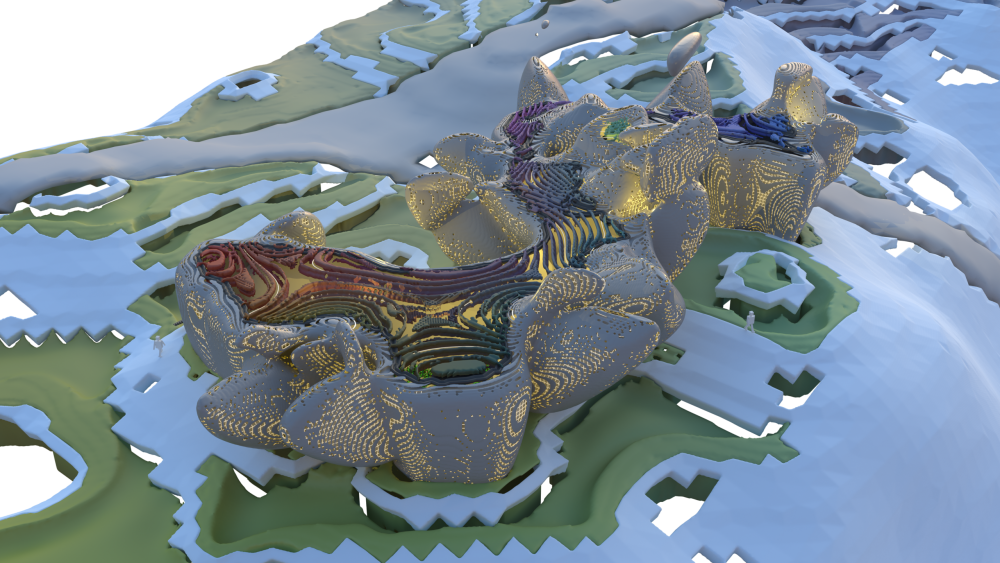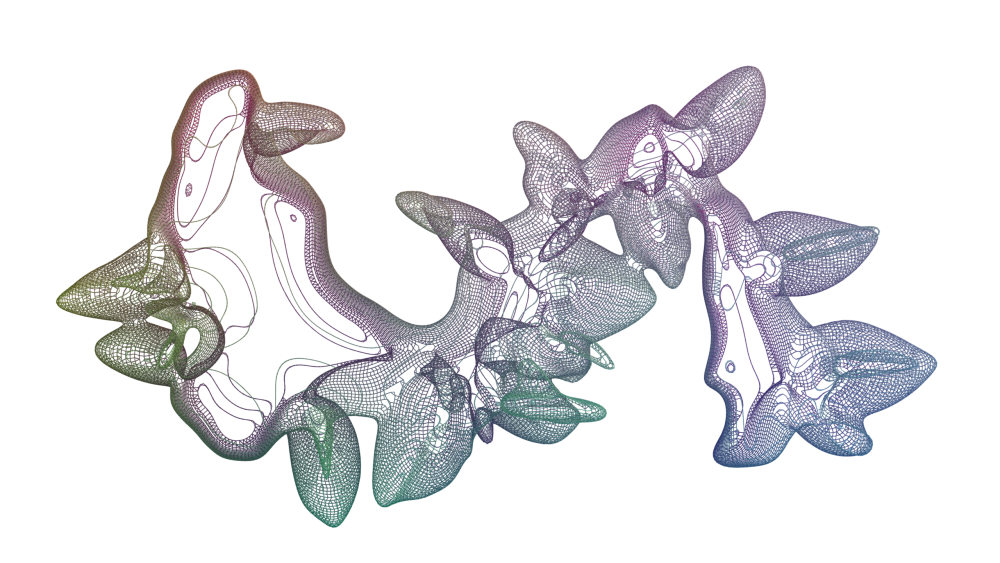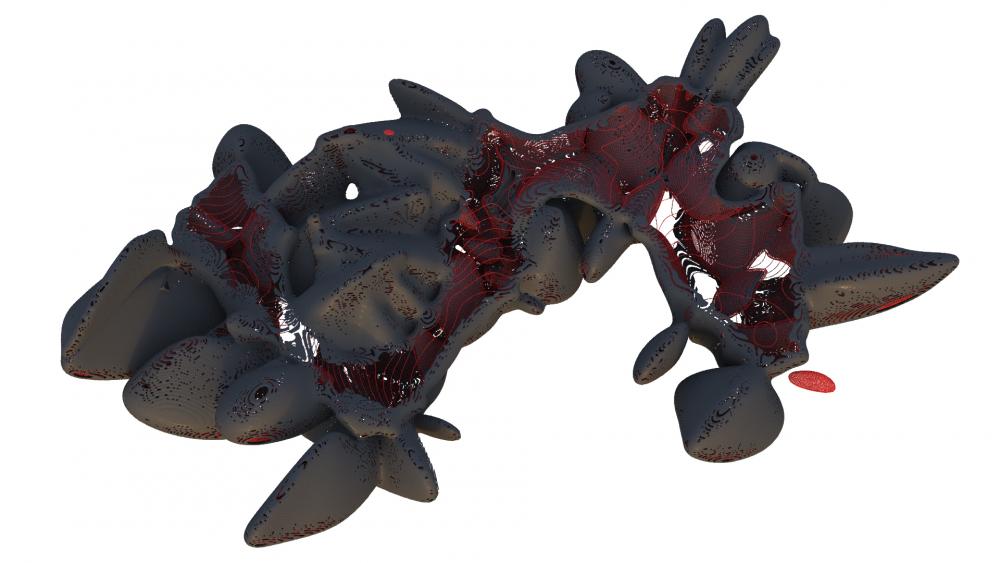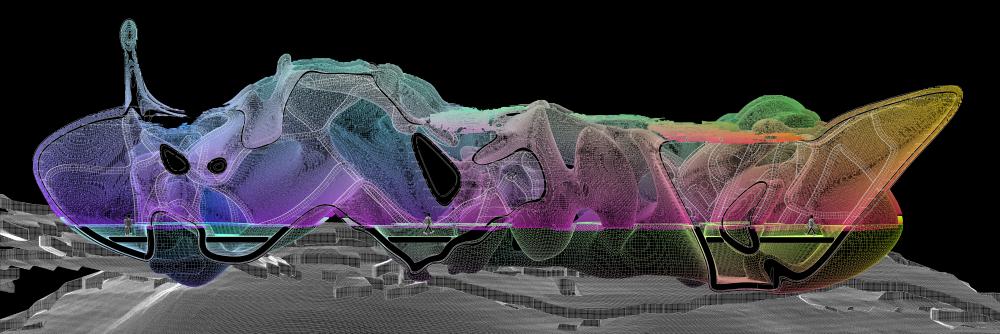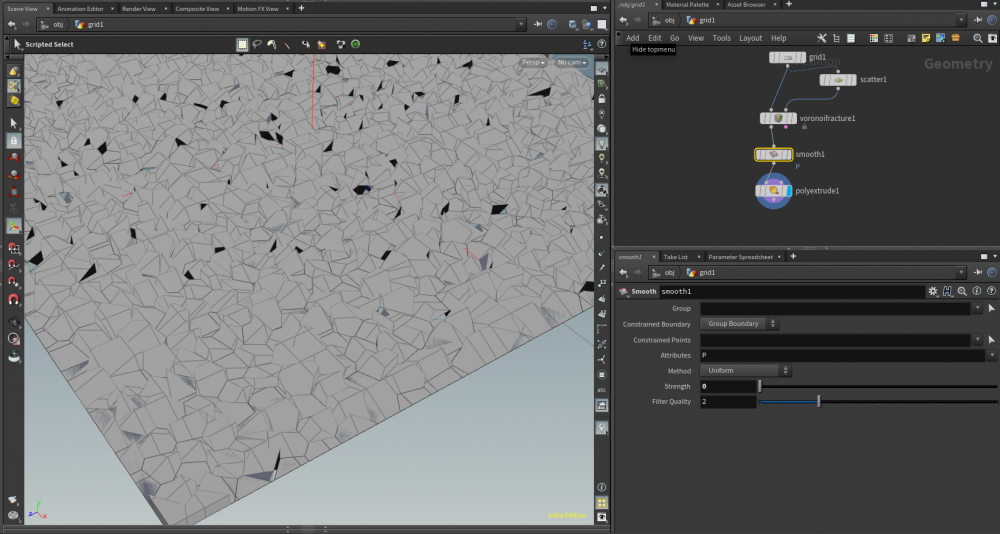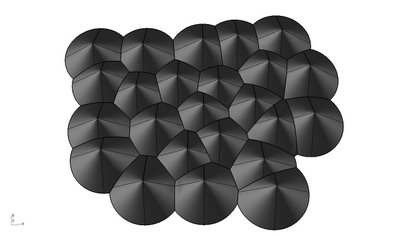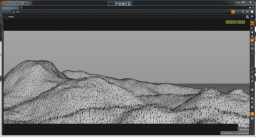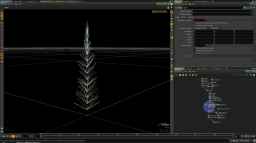Search the Community
Showing results for tags 'landscape'.
-
Hello everyone! I'm currently working on a Uni project where I would like to create a natural environment. I've followed few tutorials, some uses COPs, Substance and others. But I'm getting a bit confused about what could be the best way, considering how fast these tutorials get outdated. I would like to use Karma, or even better, an external Render engine. I would like to use the masks generated by the erode node mixed with something custom. I'm having some issues when using "Import from SOP" from the COPnet, Houdini just freezes. Scene File Prev Image Also, please let me know whatever suggestions you might have. Thank you in advance
-
I originally made a post in in the WIP section, but have finalised a selection of images that demonstrate the extent of the project at this particular time. Hope to get some tips, speculation and direction . The work started with an idea of looking into systems of growth and the procedural simulation of that growth. The question of landscape surveillance and 'fertility' arose - can a landscape (or object) topology be evaluated for growth? In this case the landscape would be a scanned model of a terrain, converted from pointcloud to mesh data and thus reinterpreted as a topology of points and primitives with certain inherent attributes: Position (vector), Normals (vector), and curvature (scalar) predominantly. The simulation can then search for 'flatness' and eliminate areas of surface beyond a limit of acceptability. The surface is then displaced whilst maintaining ties to the remainder, this seemed to mirror a process not too dissimilar to inflation (although much more noisy and undefined), always using the retopologised mesh (and thus recalculated attributes) as a driver for the next frame of growth. Generated or grown form is evaluated through a series of spatial explorations with particular functional characteristics in mind. Much like a single-surface-landscape produces the massing for proposed architectural volumes, these volumes are then reinterpreted as single-surface forms that morph into a typology of architecture defined by certain rules. The primary purpose of the interior volume is to house the program of an architecture. The height of the form is predetermined in the procedural algorithm of massing to produce volumes within a range of heights (for example between 3 and 20 meters). The nature of the form suggests an architectural language of evaluated skin as a means of facilitating architectural space. This is then differentiated to provide for the various requirements of a space of production - for example: how can the floor surface serve as a platform for plant growth; how can the side envelope serve as a mediator of thermal comfort; etc? A. There is a desired differentiation between roof and side envelope - key factors to be considered are the issues of transparency in form for light to enter the space below and the capacity to drain rainwater or melting snow. B. An impression of uniformly distributed structural frames is suggested as a method of holding up a dressing of skin not too dissimilar to ideas of bone to muscle tissue connections. C. The form is interpreted as a skin multi-functional, multi-material character. There is a desire for a thermal envelope mixed with porous characteristics that allow for breathability within the interior environment, light, and mediation from the harsh external environment. The following images are all excerpts of a fully procedural exercise; all grown; but in various stages of development of the same system.
- 3 replies
-
- 1
-

-
- simulation
- growth
- (and 12 more)
-
Hey guys, I'm copying this post from Reddit to get more exposure. Since you guys are pros, maybe you'll know the answer: I'm having an issue with my landscape material. I've got an HDA pulling in a landscape with six layers. I've setup each layer as a material function so I can blend each function in a material based on their layer name. The problem is the material only works with three layers at a time. I can't do more. This is what it looks like with three layers as expected: Three layers with blend mode set to Opaque The shader fails when I plug in more than three. It shades in a tiny square on the terrain (not shown here), the rest of the terrain is the standard checkerboard: Six layers fail with blend type set to Opaque The only way to view all layers is to set Blend Type to Alpha Composite, however I completely lose my directional lighting: Six layers with blend type set to Alpha Composite (no directional lighting) It must be something with my layering weights.. I just can't figure this out for the life of me. Here are my layer settings: Layer Blend settings Let me know if you've run into this issue; I'm sure it's an easy fix. Thanks guys, Colby
-
Hello! I'm starting a twitch dot television channel and will be streaming Houdini training content. I've worked at several large VFX and advertising studios as well as taught Houdini classes at Academy of Art university. I'm hoping I can reach a larger audience through Twitch as well as the idea that people viewing the stream can participate by asking questions and providing feedback in real time. This is my channel: https://www.twitch.tv/johnkunz My first stream will be starting on Sunday (Jan 26th) @ 1pm PST. If you follow my channel (it's free ), you'll get an email notification whenever I start a stream. I'll be going over this project I recently finished https://www.behance.net/gallery/90705071/Geometric-Landscapes showing how I built things (VOPs, packed prims, Redshift render) and why I set things up the way I did. Some of the images I made are shown below. Please come by this Sunday with any questions or ideas you might have!
-
Hi guys, I am working with the Houdini Engine in Unreal and it's a blast - the automation is really great … but I have massive problems with my masks for the landscape material so I decided to post this in the general section, because my problem is Houdini 'internal' based. I created a material attribute and Unreal get's the information from Houdini where to weight the landscape materials. This works pretty flawless, excpect that's the values are ‘wrong’. When I use these masks it happens almost everytime, thats the mask is not solid and we can see both textures. For example the whole landscape has a solid basecolor and I add a grass mask on top of it (genereated by slump and renamed after). The problem is, that the mask is almost in the middle grey-area and the grass get tinted by the underlaying rock material. The solution whould be, setting the mask to 1 with feathering edges. But how? The question is, how can I change the range of the masks in Houdini to the range I want to (0-1)? Houdinis masks are not fixed, they float here and there and I can't figure out a solution for this. I tried to use a VolumeVOP, sample the mask and run it through a power node with a clamp at the end … but somehow the values in unreal are others (the edges are now sharper), but still somewhere around 0.5 - 0.7. Thanks for your help!
- 1 reply
-
- material
- weight map
-
(and 2 more)
Tagged with:
-
I'm trying to make a plane of simple rolling hills using voronoi. I don't want realistic terrain, just basic smooth curved circular overlapping mounds with phong material. I think what I need to do is generate flattened spheres that extend outwords from the center of each cell, but I haven't been able to locate the right node to do that. I've tried grid -> voronoi fracture -> smooth -> extrude but it can't get anything that looks rounded. What am I doing wrong here? Why does everything I attempt look so "rocky" like broken glass? First image is what I have, others are examples of my intended look (more or less).
-
Hi, I have my heightfield exporting from Houdini into Unreal without any issues, but I can't seem to find any info on how to export the landscape holes. I can set the hole material, but not the actual hole itself. Does anyone know how, or can point me in the right direction? Thanks, Dave
- 3 replies
-
- unreal
- heightfield
-
(and 1 more)
Tagged with:
-
i am starting to experiment with fractal landscapes. first try: golden Forest *rendered with Thea render
- 2 replies
-
- 4
-

-
- landscape
- fractal. fractals
-
(and 1 more)
Tagged with:
-
Hey Guys, Been working on a new piece, it still has some distance to go. Namely on the shaders, trees, and instancing attributes. I am currently working on the trees and figuring out the best way to make trees in Houdini. Let me know if you have some ideas!

